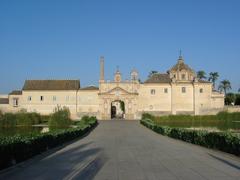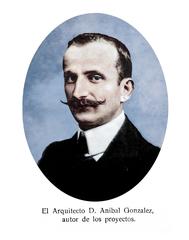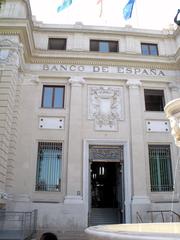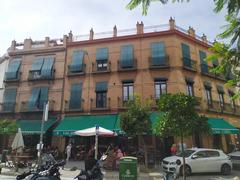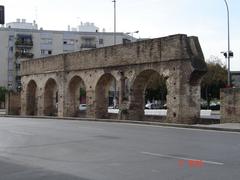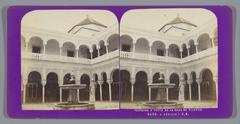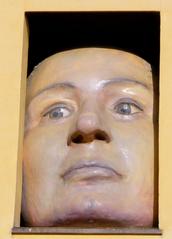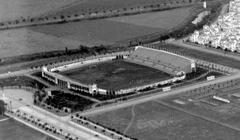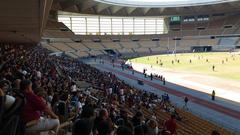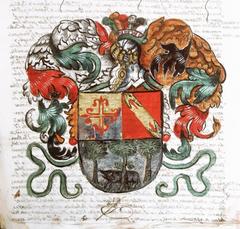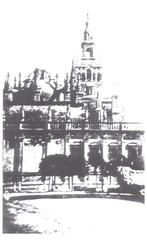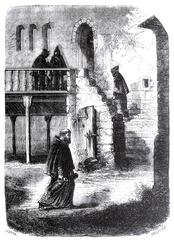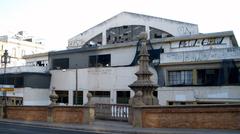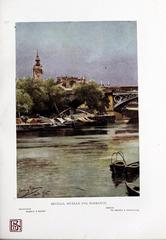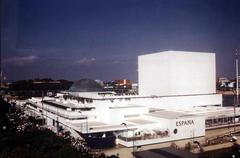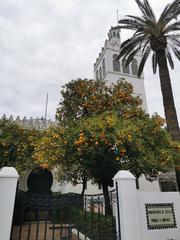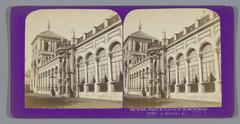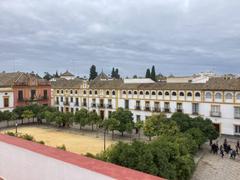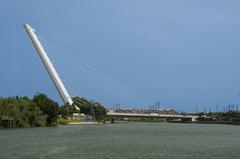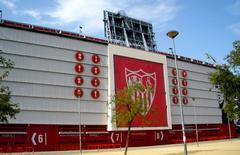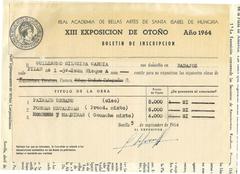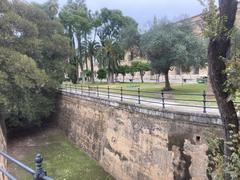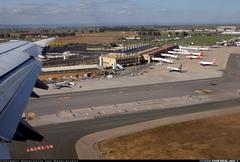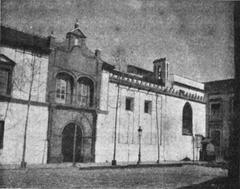Complete Guide to Cilly Hall of Sevilla: Visiting Hours, Tickets, and Nearby Attractions
Date: 04/07/2025
Introduction
Located at the heart of Seville, Spain, Cilly Hall and the Seville City Hall (Casa Consistorial de Sevilla) are landmark destinations that embody the city’s rich history, dynamic civic life, and vibrant cultural identity. This guide provides in-depth information on their historical significance, architectural highlights, visitor details—including hours and ticketing—and recommendations for nearby attractions, ensuring an enriching experience for every traveler. Seville’s evolution from ancient Tartessian origins through Roman, Islamic, and Renaissance eras has shaped its unique character (Introducing Seville).
Table of Contents
- Introduction
- Seville: Historical Context
- Seville City Hall: History, Architecture, and Visitor Information
- Cilly Hall: Cultural Role and Visitor Guide
- Visiting Details: Hours, Tickets, and Facilities
- Practical Tips for Your Visit
- Nearby Attractions
- Frequently Asked Questions (FAQ)
- Conclusion and Recommendations
- References
Seville: Historical Context
Ancient and Roman Foundations
Seville’s roots stretch back to the Tartessian civilization, followed by significant Roman influence when it was known as Hispalis. Roman occupation left an enduring urban legacy, visible today in nearby archaeological sites like Itálica. Seville’s strategic location along the Guadalquivir River enabled it to become a commercial and cultural hub (Introducing Seville).
Islamic and Christian Eras
The Islamic conquest in 711 AD introduced advanced agriculture, architecture, and learning, notably influencing Seville’s Mudéjar palaces and city layout. After the Christian reconquest in 1248, Seville flourished as Spain’s gateway to the Americas during the 16th and 17th centuries. This era saw the rise of iconic monuments such as the Cathedral and the Royal Alcázar (Introducing Seville).
Modern Revival
While the 18th century brought economic challenges, later centuries saw Seville’s revival as a modern Andalusian capital, celebrated for its traditions, festivals, and artistic achievements (Introducing Seville).
Seville City Hall: History, Architecture, and Visitor Information
Historical Background
Construction of Seville City Hall began in 1526, marking a shift in civic power and reflecting the city’s prosperity during the Spanish Renaissance. Designed by Diego de Riaño, the building exemplifies the Plateresque style, with intricate façades, medallions, and allegorical motifs. The southern façade faces Plaza de San Francisco, while the 19th-century neoclassical wing faces Plaza Nueva (Wikipedia; A View on Cities; Visitasevilla).
Architectural Highlights
- Plateresque Façade: Lavishly decorated with sculpted reliefs, medallions, and allegorical figures.
- Neoclassical Expansion: The 19th-century addition features symmetry and classical porticoes, contrasting with the Renaissance exuberance.
- Historic Interiors: Period furnishings, tapestries, and heraldic emblems exemplify Seville’s civic pride (A View on Cities; TOMA & COE).
Visitor Information
- Location: Plaza Nueva, 1; easily accessible by foot, public transport, or taxi.
- Hours: The exterior is viewable at all times; interior access is generally limited but available during special events or by guided tour (Visitasevilla).
- Tickets: Exterior viewing is free; guided tour fees apply during special events.
- Accessibility: Wheelchair accessible; assistance available upon request.
- Nearby Sites: Seville Cathedral, Giralda Tower, Royal Alcázar, and Plaza de España (Visitasevilla).
Cilly Hall: Cultural Role and Visitor Guide
Historical and Architectural Significance
Cilly Hall, while less globally known than the City Hall or Alcázar, is integral to Seville’s civic and cultural life. Its architecture showcases a blend of Mudéjar, Gothic, Renaissance, and Baroque influences, reflecting the city’s historical layers. As a center for public gatherings and artistic events, Cilly Hall continues Seville’s tradition of vibrant civic engagement (Andalucia.com; The Plane and Light).
Contemporary Cultural Role
- Events and Festivals: Cilly Hall is a hub for flamenco performances, concerts, art exhibitions, and forums, especially during Semana Santa (Holy Week) and Feria de Abril (Volare Volotea).
- Support for the Arts: The hall promotes local crafts, ceramics, and literary events, ensuring the preservation of Andalusian culture.
- Community Hub: Its central location and accessible facilities make it a gathering point for diverse communities and visitors.
Economic and Social Impact
Cilly Hall’s programming attracts both locals and tourists, supporting Seville’s creative industries and small businesses while fostering social cohesion (The Plane and Light).
Visiting Details: Hours, Tickets, and Facilities
Location and Transportation
Cilly Hall is centrally located within Seville’s historic center, easily reached on foot, by public transport, or by bicycle. Santa Justa train station is about 2.5 km away, while Seville Airport is 10 km from the city center (Seville City Guide; Seville Traveller).
Hours and Tickets
- Hours: Typically open Tuesday–Sunday, 10:00–18:00; last admission 30–60 minutes before closing. Hours may vary seasonally or during special events.
- Tickets: Modest admission fees, with discounts for students, seniors, and children. Some events are free or require advance booking (Seville City Guide; Spain Cultures).
- Guided Tours: Available in multiple languages; advance booking recommended.
- Accessibility: Ramps, elevators, and accessible restrooms are provided.
Facilities
- Restrooms and cloakroom
- Café and gift shop
- Audio guides and multilingual signage
- Child-friendly amenities and group tour options (Seville City Guide)
Practical Tips for Your Visit
- Dress Code: Wear comfortable, weather-appropriate clothing and footwear; dress respectfully during formal events (Voices of Travel).
- Best Times: Visit in spring or autumn for pleasant weather and lively festivals.
- Photography: Non-flash photography is generally permitted; restrictions apply during performances.
- Safety: Seville is a safe city, but standard precautions apply (Seville Traveller).
- Language: English is commonly spoken by staff; materials are often available in English (Our Travel Place).
- Sustainability: Use public transport, walk or cycle, and support local businesses.
Nearby Attractions
- Real Alcázar de Sevilla: Stunning Mudéjar palace with lush gardens (Spain Cultures).
- Seville Cathedral and La Giralda: Iconic Gothic cathedral and historic tower (Wanderlust Photos Blog).
- Plaza de España: Renowned for its grandeur and decorative tilework.
- Barrio Santa Cruz: Picturesque old Jewish quarter with tapas bars (Seville City Guide).
Frequently Asked Questions (FAQ)
Q: What are the visiting hours for Cilly Hall and Seville City Hall?
A: Cilly Hall: Tuesday–Sunday, 10:00–18:00 (hours may vary). Seville City Hall: Exterior always open, interior access during special tours or events.
Q: Is there an entrance fee?
A: Modest fees apply for Cilly Hall; discounts available. Seville City Hall’s exterior is free; interior tours may require tickets.
Q: Are guided tours available?
A: Yes, both venues offer guided tours. Advance booking is recommended.
Q: Are the halls accessible to people with disabilities?
A: Yes, both venues provide accessible entrances and facilities.
Q: What’s the best way to get to these sites?
A: Central locations allow easy access by foot, public transportation, or taxi.
Conclusion and Recommendations
Cilly Hall and Seville City Hall are essential to understanding Seville’s layered history and vibrant cultural present. Their architectural splendor, dynamic programming, and strategic locations make them top attractions for any visitor. Plan your trip by checking current events, ticketing options, and accessibility features to make the most of your experience.
For up-to-date information, guided tour bookings, and insider tips, download the Audiala app and follow official tourism channels. Deepen your exploration by visiting nearby landmarks and engaging in Seville’s renowned festivals for a truly immersive journey.
References
- Introducing Seville
- Seville City Hall - Wikipedia
- Visitasevilla - Seville City Hall
- A View on Cities - Seville City Hall
- Andalucia.com - Seville History
- The Plane and Light - Comprehensive Guide to Visiting Sevilla
- Volare Volotea - Festivals in Seville
- Seville City Guide
- Spain Cultures - Seville History
- Seville Traveller - Trip Planning
- TOMA & COE
- Voices of Travel
- Our Travel Place
- Wanderlust Photos Blog
